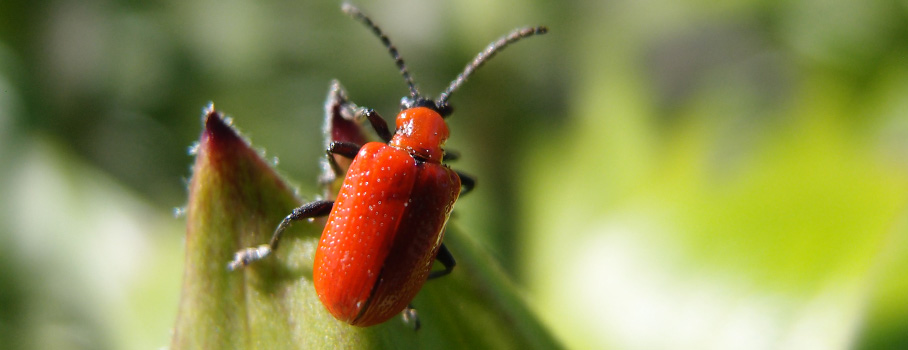
The Lily Beetle (Lilioceris lilii), is a bright red-scarlet beetle which feeds primarily on lilies (Lilium spp.), and fritillaria (Fritillaria spp.). They cause extensive damage to all parts of the lily plant above ground. This beetle, an introduced pest from Asia, was first discovered in Montreal, Canada in the early 1940s. The beetle’s first arrival to Canada is believed to be through the lily trade, getting a free ride on lilies or bulbs in the adult or egg state. The Red Lily Beetle is now a resident of every province in Canada except British Columbia.